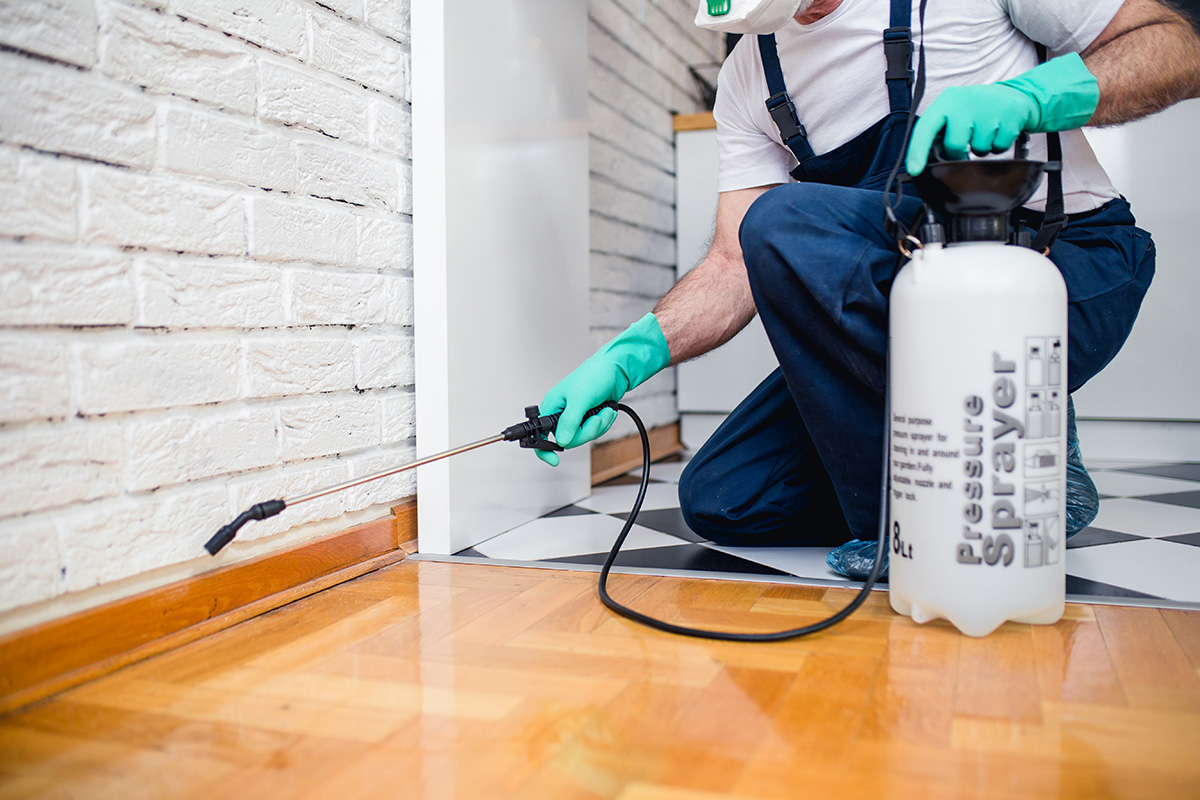A1 Charlotte Pest Control Companies - Your Local Pest Professionals
A1 Charlotte Pest Control Companies - Your Local Pest Professionals
Blog Article
Bed Bug Treatment Break Down: Contrasting Chemical Vs. Non-Chemical Solutions
In the realm of parasite control, particularly when taking care of the relentless issue of bed bugs, the selection between chemical and non-chemical treatment services can be a crucial one. Both techniques offer distinct advantages and drawbacks, influencing elements such as performance, safety and security considerations, and overall cost. By checking out the nuanced information of each technique, a more clear understanding of which path to pursue in attending to a bed bug problem can be achieved.
Effectiveness of Chemical Therapies
Chemical therapies for bed insect invasions have been extensively identified for their powerful and quick efficiency in eliminating these bugs. When thinking about the effectiveness of chemical treatments, it is important to comprehend that they can offer a fast and thorough option to a bed insect trouble.
Moreover, chemical therapies have the benefit of supplying residual impacts, meaning that they can remain to eliminate bed pests even after the initial application. This recurring activity is specifically valuable in combating any kind of possible re-infestations. Furthermore, the fast action of chemical treatments can bring alleviation to individuals facing severe bed bug invasions, enabling them to reclaim control of their living spaces quickly.
Security Issues With Chemical Solutions
One essential aspect that needs cautious consideration when utilizing chemical remedies for bed bug treatment is ensuring the security of passengers and the environment. Exposure to particular chemicals made use of in bed insect treatments can lead to respiratory issues, skin irritability, or various other unfavorable reactions, specifically in people with pre-existing problems or sensitivities.
Furthermore, the ecological effect of chemical solutions is another substantial consideration. Some chemicals utilized in bed bug treatments may be dangerous to advantageous insects, wild animals, and environments if they leach into the soil or water supply. It is necessary to make use of chemical treatments judiciously, complying with security guidelines, and taking into consideration much less harmful choices to alleviate these risks and guarantee the safe and effective monitoring of bed pest invasions.
Benefits of Non-Chemical Methods
Taking into consideration the potential safety issues and environmental influence connected with chemical remedies for bed pest therapy, exploring non-chemical approaches offers an appealing option with several distinctive advantages. Non-chemical treatments are environmentally friendly, as they do not add to air or water contamination, making them a sustainable choice for bug control.
Furthermore, non-chemical solutions can be reliable in targeting bed insects, including hard-to-reach locations where chemical therapies might not penetrate. Methods such as warmth treatment, vacuuming, steam cleansing, and mattress coverings supply comprehensive obliteration without using damaging chemicals. Furthermore, non-chemical techniques can be less turbulent, needing marginal preparation and allowing for quicker reentry right into treated locations. In general, going with non-chemical bed insect treatment approaches not only prioritizes safety and security and environmental management yet also makes certain thorough and efficient rabbit pest control parasite control.
Limitations of Non-Chemical Treatments

Furthermore, non-chemical therapies frequently need multiple applications to achieve effective eradication. This can be taxing and might not always ensure full elimination of all bed bugs and their eggs, especially in covert or hard-to-reach areas.
Moreover, the success of non-chemical treatments heavily depends on appropriate implementation and thoroughness, which can be testing for individuals without expert competence. Inadequate application of non-chemical techniques might result in insufficient removal, causing relentless problems and the demand for additional therapies.
Consequently, while non-chemical therapies have their benefits, it is vital to recognize these limitations and consider them when determining one of the most efficient strategy for taking care of bed pest infestations.
Price Contrast: Chemical Vs. Non-Chemical Options
Given the limitations related to non-chemical treatments, a vital aspect to examine in the context of bed pest monitoring is the cost comparison in between chemical and non-chemical alternatives. Chemical therapies typically involve the application of insecticides by professionals, which can vary from $250 to $900 per area, relying on the seriousness of the invasion and the size of the area to be dealt with. In comparison, non-chemical therapies like warmth therapy or vapor can be extra costly, with expenses ranging from $1,000 to $6,000 for a whole home. While the first expense of chemical treatments might appear reduced, several treatments might be needed to fully eliminate the infestation, possibly boosting the general cost. On the other hand, non-chemical options might give an extra lasting and environmentally friendly option, although wikipedia reference they can be cost-prohibitive for some individuals. Ultimately, when thinking about the cost of bed pest treatment alternatives, it is necessary to evaluate the upfront costs against the efficiency and long-term sustainability of the selected method.
Conclusion

Thinking about the possible safety and security issues and environmental influence connected with chemical options for bed insect treatment, checking out non-chemical methods provides an appealing alternative with several unique advantages.Provided the restrictions associated with non-chemical treatments, a vital aspect to examine in the context of bed pest administration is the cost comparison between chemical and non-chemical alternatives. In comparison, non-chemical therapies like warm treatment like this or vapor can be extra costly, with expenses ranging from $1,000 to $6,000 for a whole home. While the preliminary price of chemical treatments may seem reduced, several treatments might be required to completely eliminate the invasion, potentially raising the overall cost.In verdict, when comparing chemical and non-chemical bed pest treatment alternatives, it is important to think about performance, safety, advantages, limitations, and cost.
Report this page